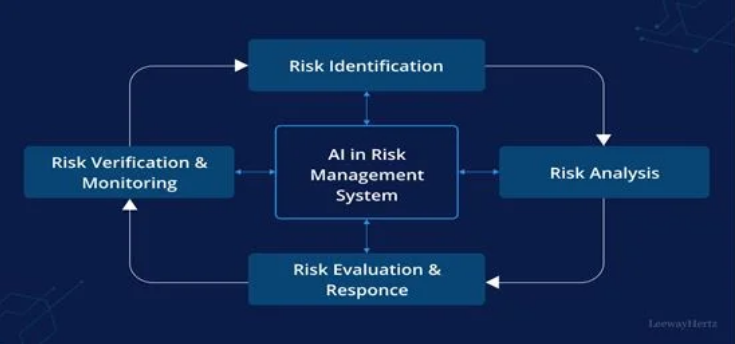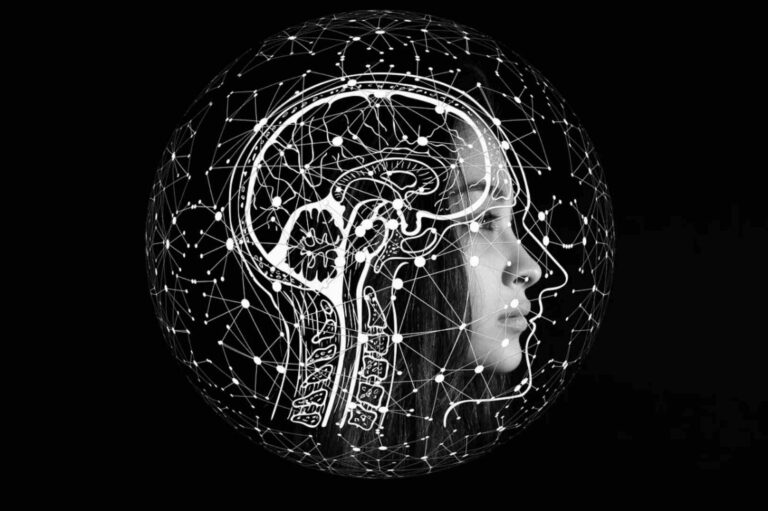How AI is Transforming The Bank Sector in USA?
AI was introduced in banking in the early stages, before this banks used simple automation services for basic tasks like transaction processing and record keeping. AI is transforming the bank sector in the USA by enhancing customer experience, improving security, streamlining operations, and offering personalized services. As time passed, technology became more advanced, Banks started using the latest AI tools for their operations and services.
In the last decades, AI tools become an integral part of banking services and operations. The large amount of data generated by banks provides a perfect opportunity for AI to analyze and insight efficient solutions.
Artificial intelligence is transforming the banking industry, with far-reaching implications for traditional banks and neobanks alike. This transition from classic, data-driven AI to advanced, generative AI provides increased efficiency and client engagement never seen before in the banking sector. According to McKinsey’s 2023 banking report, generative AI could enhance productivity in the banking sector by up to 5% and reduce global expenditures by up to $300 billion. But that’s not even half of the picture.
Key drivers for AI adoption
Artificial Intelligence allows in higher customer support, Modern customers assume brief, customized, and smooth-to-use bank offerings. AI presents a majority of these pointers with its superior and modern-day tools, by using the use of chatbots for instant help and providing short carrier according to consumer call for.
AI is a multi-version software, that may take care of many obligations at a time. So it allows banks in fee saving. Many duties require many human workers, AI can do such obligations by myself like information entry, file keeping, and plenty of greater patron services. This saves banks cash and allows human employees to awareness on more complex tasks.
AI Powered Fraud Detection
Real-time Monitoring:
AI structures can effortlessly monitor unusual sports that might imply fraud. It can spot and hit upon any transactions as they occur. AI learns human conduct. If something out of the ordinary takes place, they speedy spot it. For example sudden huge withdrawal or an unusual transaction. They discover unlawful matters and the gadget flags them. They do actual-time monitoring and apprehend frauds and pointless alerts.
Many algorithms in AI systems detect and send alerts for unusual activities. They save banks and customers from great loss.
Enhanced security Measures:
AI can work with security features, like biometric authentication (fingerprints or Facial popularity), to add greater protection. If AI detects unusual pastime, it could cause extra verification steps to make sure the man or woman making the transaction belongs to the account holder.
AI structures can technique and analyze huge amounts of information an awful lot faster and fast than people. This capacity lets in AI to detect and analyze complicated styles and transactions that might be fraudulent, which humans might not be capable of measure.
Artificial intelligence structures use system studying models that are skilled on historical and large quantities of information of fraudulent and illegal transactions. These models help them to discover and identify fraudulent activities primarily based on beyond and historic patterns.
Improving Security

AI helps in detecting and preventing fraud through advanced algorithms that analyze transaction patterns and identify suspicious activities.
Furthermore, AI is enhancing cyber security in the banking sector by detecting and responding to cyber threats more effectively.
Machine learning models can analyze network traffic, identify suspicious patterns, and automatically implement countermeasures, reducing the risk of data breaches and cyber-attacks.
Steps Involved:
- Data Collection: Gathering data from various transactions.
- Pattern Recognition: Using machine learning algorithms to identify unusual patterns.
- Alert Generation: Automatically flagging and notifying suspicious activities.
- Action: Blocking fraudulent transactions and alerting customers and authorities.
Read Also: Understand The Best Lead-Capture Software Solutions
AI in Risk Management
AI is revolutionizing risk management in banking systems by making it more precise, efficient, and proactive. Here’s how AI systems banks in managing risks:
Predictive Risk Analysis:
AI uses advanced algorithms to analyze extensive data from multiple sources, such as transaction histories, trends, and record keeping. By recognizing patterns and trends, AI can detect potential risks before they happen. For instance, if an AI system detects signs of an impending economic downturn, banks can adjust their potential losses.
Enhanced Credit Scoring:
Traditional credit scoring relies upon on restricted records. Like credit records and profits. AI systems, but, can deal with a broader range of things, together with spending behavior, social media activity, and telephone utilization styles. This comprehensive analysis gives a extra correct and authentic picture of a customer’s credit, assisting banks in making better lending decisions, reducing the hazard of defaults, and enhancing credit score scoring.
Early Warning Systems:
AI-pushed early caution structures continuously display and come across diverse risk indicators and flag capability troubles. Before they turn out to be widespread. For instance, if a company shows symptoms of financial trouble, an AI gadget can alert the financial institution, permitting them to take preventive measures and early movement. This proactive technique of AI allows banks to cope with dangers before they expand and help transform the bank zone relying on it.
Benefits Of AI Use in The Bank Sector in USA

Improving Decision-Making:
AI offers banks with valuable effects derived from statistics evaluation, improving their selection-making techniques. By knowledge contemporary market trends and purchaser behavior, banks could make informed selections about product improvement, advertising techniques, patron needs and investment, and loan possibilities.
In banking, AI facilitates via studying quite a few records greater speedy than humans. It looks at such things as how purchaser use their bills, and credit cards, developments within the economic system, and what competition are doing.
With this information, banks can make selections like in which to make investments money, what new merchandise to provide, and the way to make services higher for his or her customers and employees. AI makes these selections quick and extra accurately than humans can by myself, helping banks live in advance and make alternatives which might be more likely to prevail and obtain dreams.
Future Prospects:
The potentialities of AI in USA banking look promising, with continuous improvements and the modern day in generation anticipated to convey even extra accurate insights. Emerge technology like blockchain and the Internet of Things will possibly be incorporated with Artificial intelligence sera, offering new possibilities for banks and customers to beautify financial institution services and operations.
However, banks ought to additionally cope with moral, legal, and real worries, inclusive of information privateness, security, and algorithmic bias, to make certain the sustainable adoption of AI in banking.
Global Growth:
AI in banking isn’t just developing in the USA however the world over. Banks in many countries are adopting AI structures to enhance their services, enhance the security and privateness of information, and streamline operations. This worldwide adoption of AI way that greater humans round the sector can benefit from advanced and modern banking technologies.
Despite several advantages of AI in banking, many banks nonetheless need help knowing where to begin or enforce AI offerings. Adapting new AI technology is vital for financial establishments to be competitive and fulfill client expectancies to perform more effectively.
FAQs
Q1: What is AI in banking?
AI in banking refers to using artificial intelligence technology to automate, decorate, and optimize banking procedures and offerings.
Q2: How does AI improve customer service in banking?
AI improves customer service via chatbots, digital assistants, and personalised banking services, presenting brief and tailor-made responses to consumer queries.
Q3: What are the benefits of AI in fraud detection?
AI enhances fraud detection by way of monitoring transactions in actual-time, recognizing styles, and identifying uncommon sports that can indicate fraud.
Q4: What challenges do banks face when implementing AI?
Challenges include data privacy and security concerns, regulatory compliance, high implementation costs, and a skill gap in AI expertise.
Q5: What is the future of AI in banking?
The future consists of multiplied personalization, enhanced predictive skills, more integration with fintech, and the growth of AI applications.
Conclusion
Through better customer experience, increased security, streamlined operations, and personalised services, artificial intelligence (also known as AI is transforming the bank sector in the United States. AI is reworking the banking zone within the USA by using improving customer service, adorable operations, improving danger management, detecting fraud transactions, ensuring regulatory compliance, and providing personalised financial offerings to banks and clients. As AI keeps to adapt, it’ll convey even more possibilities for banks to enhance their services and operations with the use of the state-of-the-art tools and technology of AI. By embracing AI systems, banks can live in advance and aggressive, guard and stable their property and records, and make sure lengthy-term stability in an an increasing number of digital era. The adoption of AI structures and modern technology in banking is not just a trend however vital for future increase and fulfillment.






